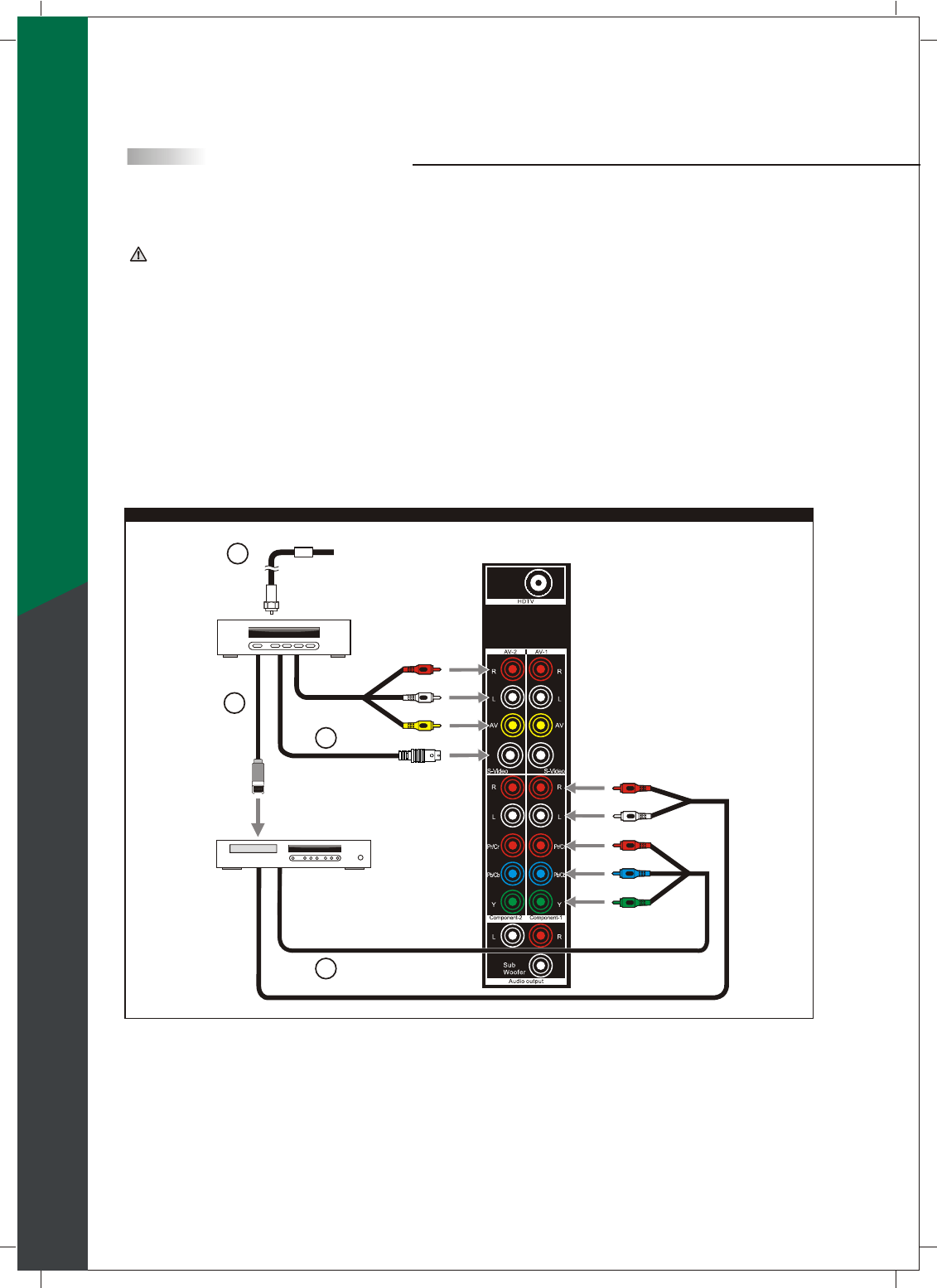
Connecting to a D-VHS with Component Cables
Disconnect all power sources before making any connections.
TV Installation and Connection Guide
23
1.Connect a 75-ohm coaxial cable from your cable or antenna to the Set-Top-Box's Antenna jack.
2.Using Audio and S-Video (YPbPr, or HDMI is strongly recommended) cables, connect the Set-Top-Box's
Audio and S-Video OUT jacks to the TV's Audio and S-Video IN jacks.
3.Connect an I-Link cable from the Set-Top-Box to the D-VHS equipment for video transmission and record.
4.Using Audio and Component video cables, connect the D-VHS's Audio and Y, Pb and Pr OUT jacks to the
TV's Audio and Y, Pb and Pr IN jacks for watching the recorded videos.
Note: The YPbPr connection provides the best quality of video signal compared to AV (Composite) and S-Video
connection.
Use this method of connection if your D-VHS has component (Y, Pb, Pr) jacks.
Note: The Y, Pb and Pr jacks do not provide audio, so audio cables must be connected to provide sound.
Colors on Component Video connectors:
Y: Green
Pb (also identified as Cb, CB or B-Y): Blue
Pr (also identified as Cr, CR or R-Y): Red
Note: YPbPr is set at default to best perform with FHD 1080p content, set Input to "Interlace DVD"
for best performance with regular 480i and 480p content.
(Menu - Picture - Mode - Input = "Interlace DVD")
For 242 / 247 / 252 / 255 TFHD Models
D-VHS
Set-Top-Box
i-Link
cable
Rear of TV
2
A/V cable with
RCA connector
S Video cable
3
Yellow
Red
White
(75-ohm
coaxial
cable)
1
Red
Blue
Green
Red
White
Component cable with RCA connector
Audio cable
4
Cable/Satellite
English


















